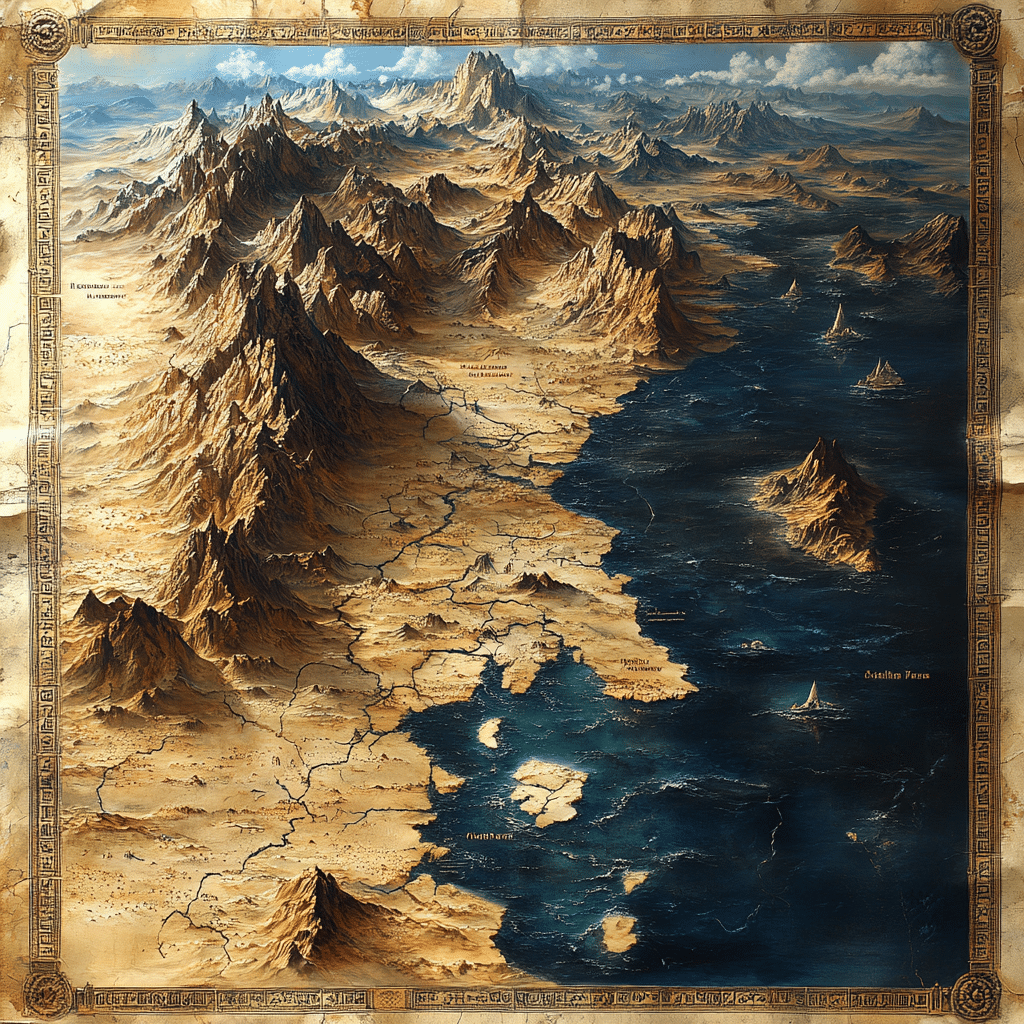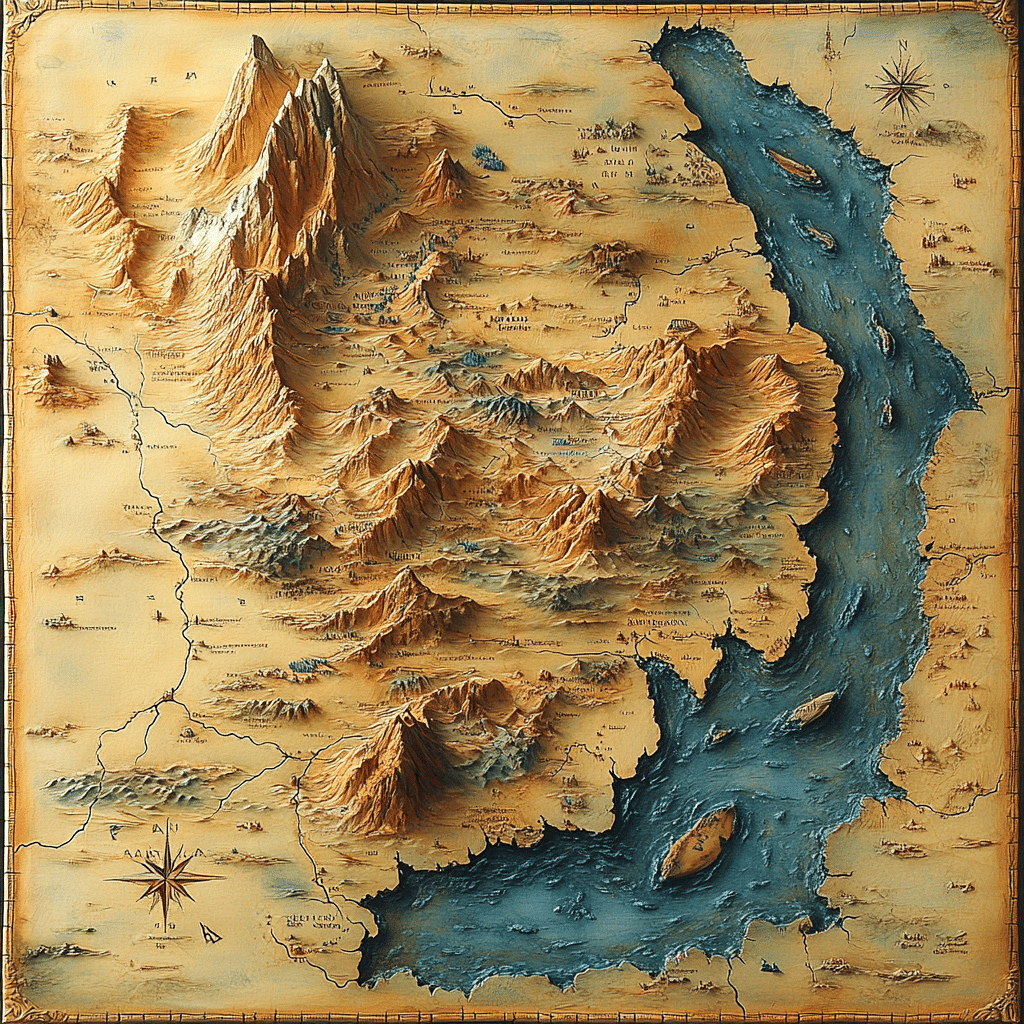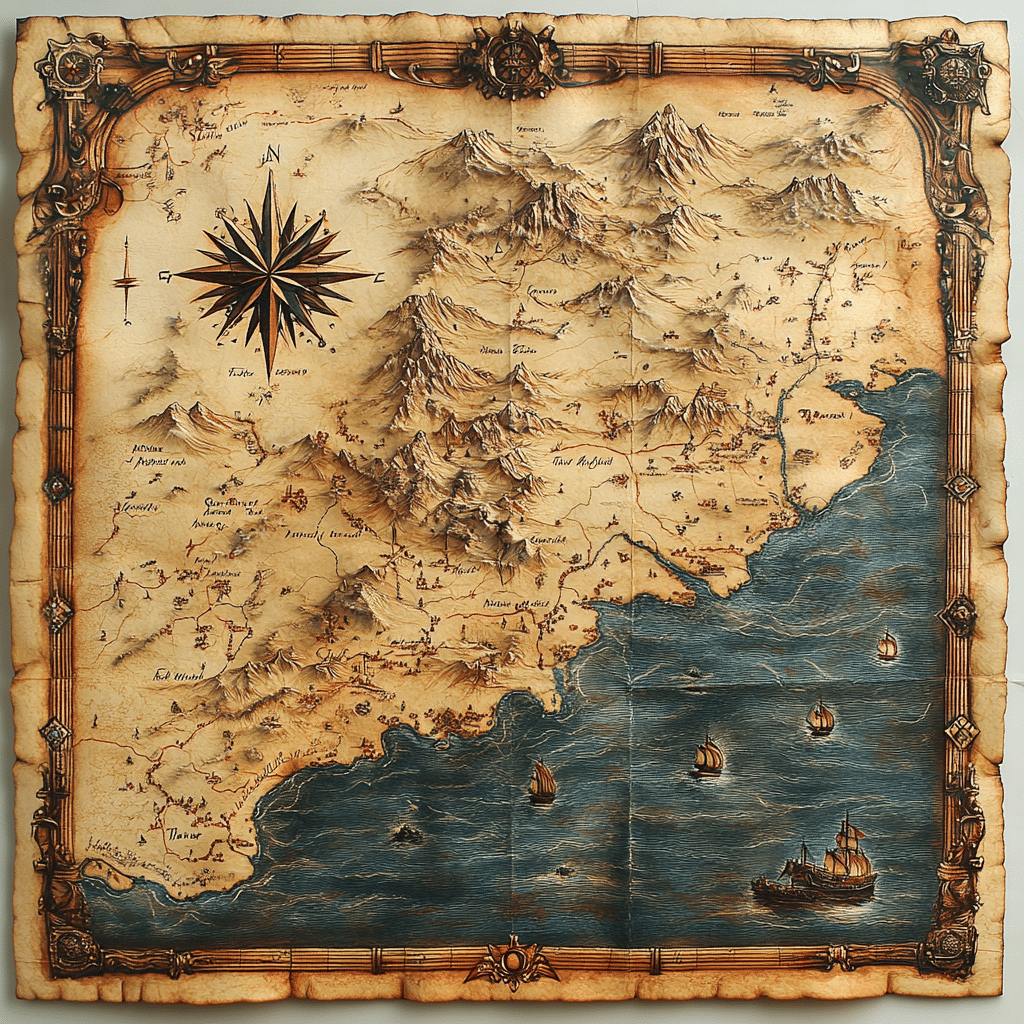When we talk about the Red Sea map, we are diving into a world bursting with marine riches and cultural ties. Spanning across significant countries like Egypt, Sudan, Eritrea, Djibouti, Israel, Jordan, Saudi Arabia, and Yemen, this body of water is drenched in history, biodiversity, and economic influence. Be it the alluring coral reefs or the stories etched in historical shipwrecks, the Red Sea is a treasure waiting to be uncovered. Whether you’re after luxury travel tips or an unforgettable dive into nature’s beauty, the Red Sea won’t disappoint.
Top 7 Wonders: Unveiling the Riches of the Red Sea Map
The Red Sea map reveals the top seven wonders that define the magical experience of this region. Let’s explore what makes each location a must-visit on your journey.
First up, we have the stunning coral reefs. Ras Mohammed National Park, nestled in Egypt, is the gem of this underwater paradise. Here, the diverse marine life ranges from vibrant clownfish to majestic manta rays, tempting divers and snorkelers alike. You’re not just visiting; you’re entering a colorful world beneath the surface!
The Red Sea map also leads us to the tales hidden within its depths. Take the iconic SS Thistlegorm, for instance. This World War II freighter sank near Sharm El Sheikh and is now a popular dive site. Each shipwreck has its story, offering insights into maritime history and the resilience of human endeavor.
Stretching along the Saudi coast, the Great Barrier of Coral is another highlight. It’s vital for the ecological balance here. Mapping this spectacle reveals not just its beauty, but also the urgent need to safeguard these fragile ecosystems as they face environmental threats.
This sea is home to some fascinating marine species! From endemic creatures like the Red Sea squirrelfish to endangered hawksbill turtles, the diversity here is a wake-up call for conservation. It’s crucial to protect these species and the homes they inhabit.
Cities along the coast, such as Aqaba in Jordan and Jeddah in Saudi Arabia, weave a rich cultural tapestry. Historic mosques, traditional markets, and local cuisine tell stories that transcend time. These cities invite travelers to experience the blend of Middle Eastern and African cultures firsthand.
Don’t forget the Bab el Mandeb Strait! This key waterway connects the Red Sea to the Gulf of Aden and serves as a crucial artery for global shipping. Understanding its geographic significance is essential for anyone interested in maritime trade.
Lastly, the katabatic winds create distinctive microclimates in the region. The interaction between the cool sea air and warm desert heat fosters a unique biodiversity that enhances both marine and terrestrial life.

The Cultural Tapestry of the Red Sea: Connections to the Great Wall and Beyond
The interplay of geography and cultural history makes the Red Sea a captivating subject that links to varied global wonders, including the Great Wall of China. At a glance, these regions may seem worlds apart, yet both represent resilience and natural beauty intertwined with human achievement.
Linking the Great Wall of China to the Red Sea Map
The Great Wall stands as a symbol of fortification, much like the Red Sea map exemplifies maritime pathways. Just as the wall safeguarded the Chinese city from invasions, the Red Sea has served as a channel for trade, making it a lifeline of commerce for centuries.
The Role of Cities in Shaping Trade Routes
Today, modern trade routes from Chinese cities, including bustling Guangzhou and Shenzhen, flow towards the Red Sea. This connection reveals how ancient trade routes still influence economic dynamics, making it clear why mapping this region is vital for understanding global commerce.
Great China Initiatives
Current initiatives like the Belt and Road Initiative directly impact the economic landscape surrounding the Red Sea. The integration of this fortified waterway into modern trade networks underscores its importance as a corridor facilitating trade from Great China to Europe and beyond.
Charting Future Seas: Environmental Awareness and Conservation Efforts
As awareness grows regarding marine conservation, understanding the Red Sea map is crucial. Mapping helps depict relationships among coral reefs, fisheries, and shipping lanes, paving the way for better environmental strategies.
Innovative Practices in Fisheries
Countries bordering the Red Sea are stepping up with sustainable fishing measures. Programs like the New China Star aim to promote responsible seafood practices, showcasing the vital connections between international fisheries.
Environmental Education through Mapping
Educational initiatives that incorporate the Red Sea map are essential for building awareness. By teaching younger generations about the significance of this region, we can inspire future guardians of our oceans.

Navigating the Horizons of the Red Sea
The Red Sea is a living canvas of cultural exchange, biodiversity, and economic vitality. Charting its wonders allows us to glean insights that drive us towards sustainable practices and strong international relationships. This body of water is not just a destination; it is a crossroads of existence, beckoning travelers to explore, learn, and protect its myriad wonders for generations to come.
If you’re ever near Cinemark Orlando, or thinking about tasting some of the best food from the Zaxby’s menu with prices in hand or a quick bite at Taco Burrito king, remember that you could be putting together plans to uncover stories and marvels etched in the Red Sea map. So, what are you waiting for? Adventure awaits!
Discovering the Wonders of the Red Sea Map
A Glimpse into History
The Red Sea map offers a captivating insight into ancient maritime routes that have shaped trade and exploration. Did you know that this sea has been a bustling trade highway since the time of the Pharaohs? Ships would carry spices and gold, forging connections that transcended cultures. This trading spirit seems to echo through the ages, much like the actors of the golden age of Hollywood, such as John barrymore, who captivated audiences with their charisma and flair for adventure. Speaking of adventures, if you’re planning to visit the stunning views found in places like Rock City, Chattanooga, you might just be walking the same paths once trodden by traders.
Depths and Biodiversity
When diving into the stunning sea’s depths, you’ll find more than just beautiful corals—it’s home to an incredibly diverse marine life. The waters host around 1,200 species of fish! While pondering how to enjoy a meal after a day of exploration, many folks wonder about local dining spots. For instance, if you’re curious about what’s on the Zaxby’s menu with prices, you’ll find plenty of options to refuel after a thrilling day under the waves. This vibrant ecosystem, mapped out in detail by scientists and explorers alike, is a treasure trove of colors and species waiting to be documented.
Cultural Crossroads
The Red Sea is often viewed as a cultural melting pot, bridging continents and promoting a mix of customs and cuisines. Just as the fusion cuisine of French-moroccan influence brings together unique flavors, so does the Red Sea bring together diverse cultures in its waters, impacting art, language, and more. If you’re feeling whimsical, why not pen down some of your outdoor adventures as funny Poems? After all, capturing these memories in a humorous light can turn them into cherished keepsakes for friends and family. Exploring the beauty highlighted on the red sea map is not just about the sights; it’s about the stories and experiences that arise on the journey.

Which country does the Red Sea belong to?
The Red Sea isn’t owned by any one country; it’s shared among Egypt, Sudan, Eritrea, Djibouti, Israel, Jordan, Saudi Arabia, and Yemen.
How deep is the red sea where Moses crossed?
Where Moses is believed to have crossed, the Red Sea reaches a depth of about 2,500 feet, which fits the biblical stories about the waters being divided.
What is the Red Sea most famous for?
The Red Sea is famous for its amazing recreational diving sites, like Ras Mohammed, SS Thistlegorm, and various beautiful reefs teeming with marine life.
Why is it called the red sea?
The name “Red Sea” likely comes from a type of bacteria called Trichodesmium erythraeum, which can turn the water reddish-brown, giving it that distinctive name.
Can you swim in the Red Sea?
Yes, you can swim in the Red Sea, and many people do, especially in touristy spots where the water is warm and clear.
How long did it take Moses to cross the Red Sea?
The Bible doesn’t specify how long it took Moses to cross the sea, but it’s often depicted as a miraculous event rather than a race against time.
Have Egyptian artifacts been found in the Red Sea?
Various Egyptian artifacts have been found in the Red Sea, which include remnants associated with ancient trade and possibly even shipwrecks.
What was found at the bottom of the Red Sea?
At the bottom of the Red Sea, divers and explorers have discovered intriguing shipwrecks, coral reefs, and some artifacts from ancient civilizations.
Why is the Red Sea so important?
The Red Sea is crucial for international shipping routes and has rich biodiversity, making it an essential area for marine life and industries.
What is unusual about the Red Sea?
What’s unusual about the Red Sea is that it’s the saltiest sea that connects to the ocean without a river flowing into it, which is pretty unique.
Can you float in the red sea?
Yes, you can definitely float in the Red Sea due to its high salinity, which makes it easier to stay buoyant.
Which is the largest sea in the world?
The largest sea in the world is the Philippine Sea, which is a vast body of water in the western Pacific Ocean.
Are there whales in the Red Sea?
Yes, there are whales in the Red Sea, particularly species like the humpback whale, which migrate through these waters.
What does the Quran say about the Red Sea?
The Quran mentions the story of Moses and the parting of the waters, emphasizing the miraculous nature of the event.
Has anyone explored the bottom of the Red Sea?
Scientists and researchers have explored the Red Sea’s bottom, revealing geological features and archaeological finds, but there’s still much to learn.
What is the sea between Turkey and Ukraine?
The sea between Turkey and Ukraine is the Black Sea, which is known for its unique ecological characteristics.
Is Red Sea part of Israel?
Yes, the Red Sea does touch Israel’s coastline, particularly around the resort city of Eilat.
What was found at the bottom of the Red Sea?
The bottom of the Red Sea has revealed shipwrecks, ancient remnants, and various marine formations that keep attracting archaeological interest.
Why is the Black Sea called the Dead Sea?
The Black Sea is sometimes called the Dead Sea due to its low salinity and limited marine life, making it quite different from the more vibrant Red Sea.























